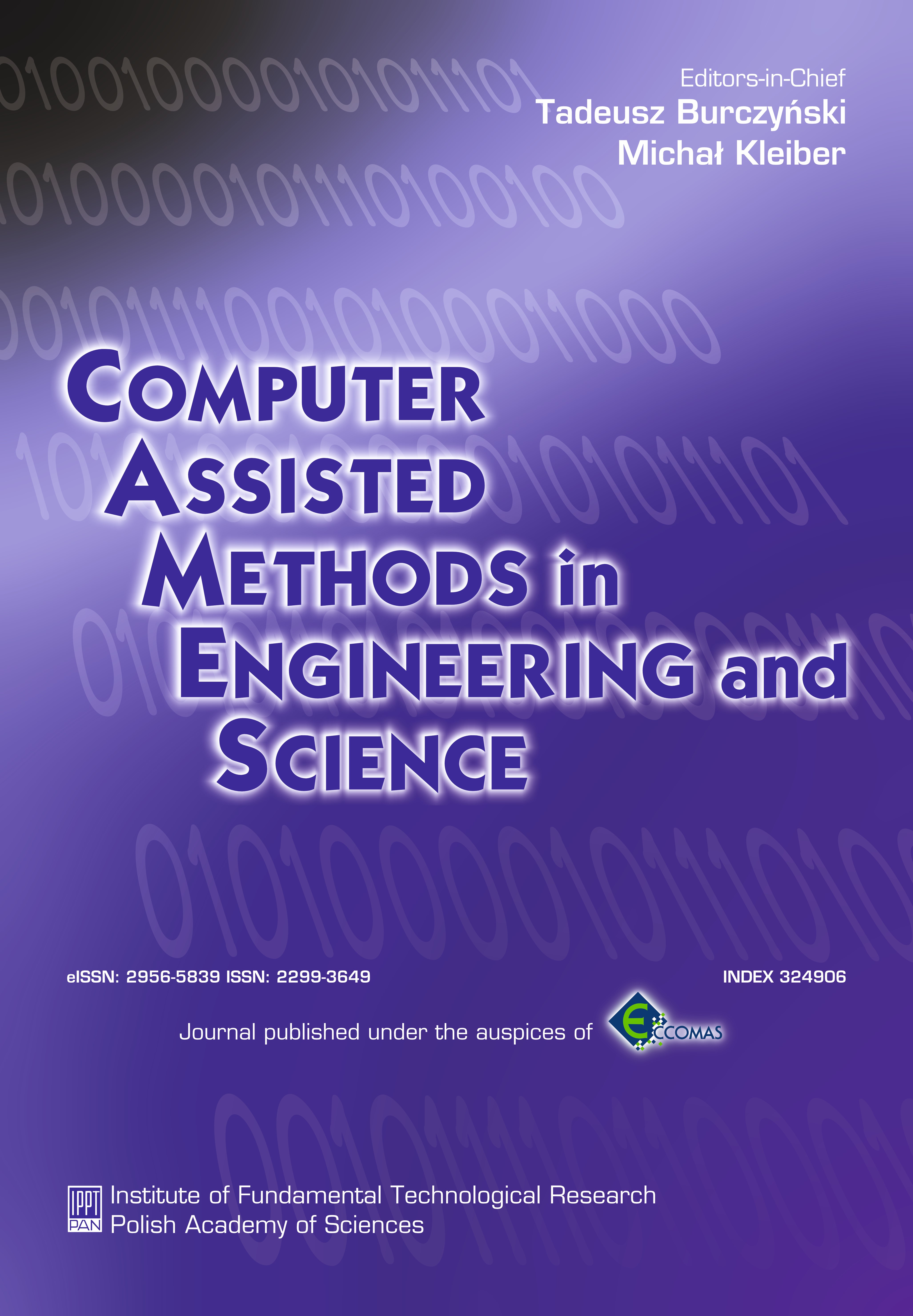Abstract
The recurrent approach constructed via the stochastic central difference (SCD) is a very fast method for analyzing non-stationary random responses. However, the computational results depend to a great extent upon the discrete time-step size. A new recurrent approach is proposed in this report. It is based on the theory of linear differential equations. Theoretical analysis shows that this algorithm is unconditionally stable for all damped systems. Two examples show that the proposed approach is not sensitive to the time-step.
Keywords:
non-stationary response, linear differential equations, variance, finite difference, stochastic central differenceReferences
[2] Y.K. Lin. Some recent advances in the theory of random vibration. Naturwissenschaften, 89: 187–200, 2002.
[3] G.I. Schueller. State-of-the-art report on computational stochastic mechanics. Probabilistic Engineering Me-chanics, 12(4): 197–321, 1997.
[4] C.W.S. To. The stochastic central difference method in structural dynamics. Computers & Structures, 23(6): 813–818, 1986.
[5] C.W.S. To. Direct integration operators and their stability for random response of multi-degree-of-freedom systems. Computers & Structures, 30(4): 865–874, 1988.
[6] C.W.S. To. A stochastic version of the newmark family of algorithms for discretized dynamic systems. Computers & Structures, 44(3): 667–673, 1992.
[7] D. Roy. A family of weak stochastic Newmark methods for simplified and efficient Monte Carlo simulations of oscillators. International Journal for Numerical Methods in Engineering, 67(3): 364–399, 2006.
[8] S.W. Zhang, H.H. Zhao. Effects of time step in stochastic central difference method. Journal of Sound and Vibration, 159(1): 182-188, 1992.
[9] C.W.S. To. Parametric effects on time step of the stochastic central difference method. Journal of Sound and Vibration, 137(3): 509–515, 1990.
[10] M.L. Liu, C.W.S. To. Adaptive time schemes for responses of non-linear multi-degree-of-freedom systems under random excitations. Computers & Structures, 52(3): 563–571, 1994.
[11] C.W.S. To, M.L. Liu. Random responses of discretized beams and plates by the stochastic central difference method with time co-ordinate transformation. Computers & Structures, 53(3): 727–738, 1994.
[12] Z. Chen, C.W.S. To. Responses of discretized systems under narrow band nonstationary random excitations. Part 1: Linear problems. Journal of Sound and Vibration, 287(3): 433–458, 2005.
[13] S.F. Wojtkiewicz, B.F.J. Spencer, L.A. Bergman. On the cumulant-neglect closure method in stochastic dynamics. International Journal of Non-Linear Mechanics, 31(5): 657–684, 1996.
[14] C. Moler, C. Van Loan. Nineteen dubious ways to compute the exponential of a matrix. SIAM Review, 20(4): 801–836, 1978.
[15] C. Moler, C. Van Loan. Nineteen dubious ways to compute the exponential of a matrix, twenty-five years later. SIAM Review, 45(1): 3–49, 2003.
[16] W.X. Zhong. On precise integration method. Journal of Computational and Applied Mathematics, 163(1): 59-78, 2004.
[17] C.W.S. To. Time-dependent variance and covariance of responses of structures to non-stationary random excitations. Journal of Sound and Vibration, 93(1): 135–156, 1984.


